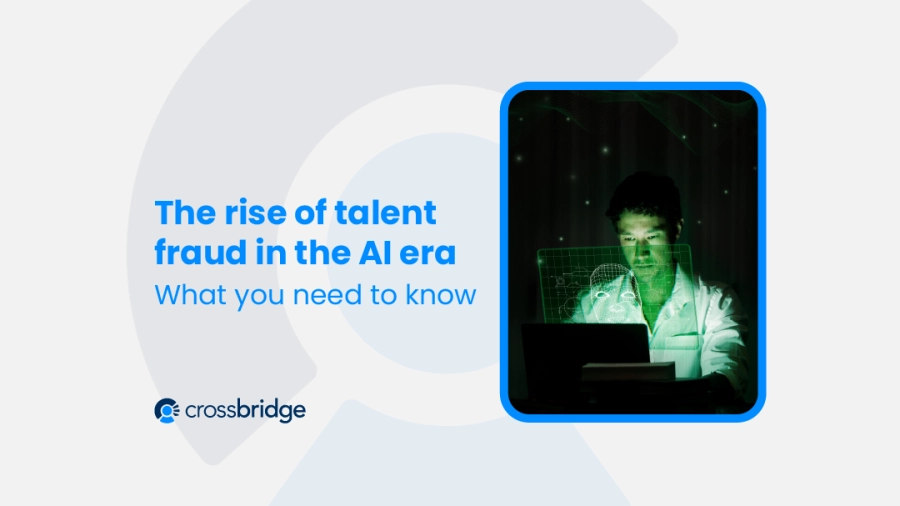It’s never been easier to look like the perfect hire. Generative AI, deepfake tools, and resume automation are changing how candidates present themselves, and not always in honest ways.
This new wave of AI talent fraud is flying under the radar of automated systems, costing companies time, money, and trust.
What does talent fraud look like now?
AI has supercharged classic resume inflation:
- AI-generated resumes that perfectly match job descriptions using tools like ChatGPT.
- Interview deepfakes using avatars or paid proxies to pass remote assessments.
- Fake portfolios powered by copy-paste GitHub code and AI art.
A ResumeBuilder.com survey found that 3 in 10 job seekers have already used ChatGPT to generate application materials.
Why most AI hiring tools don’t catch it
Most hiring software is designed to recognize keywords and structure, not authenticity. Which means:
- Fake credentials pass unchecked.
- AI-written answers sound perfect.
- Deepfakes are hard to detect at scale.
This is why companies need a hybrid process—AI + human screening, like we use at Crossbridge.
Red flags to watch for
- Resume, LinkedIn, and cover letter don’t match in tone or detail
- Overly scripted responses in interviews
- Unverifiable or vague job references
- Inability to explain projects or decision-making under pressure
What can companies do?
- Introduce structured screening calls early
- Require real-time problem-solving
- Cross-reference data across platforms
- Use human-led hiring methods to verify skills and cultural fit
Final thought:
AI might help spot top candidates, but it also helps candidates fake it. Don’t outsource trust. Pair AI with actual human judgment.
Want to know how? Talk to our team
(Next: 10 Risks of Hiring with AI)
